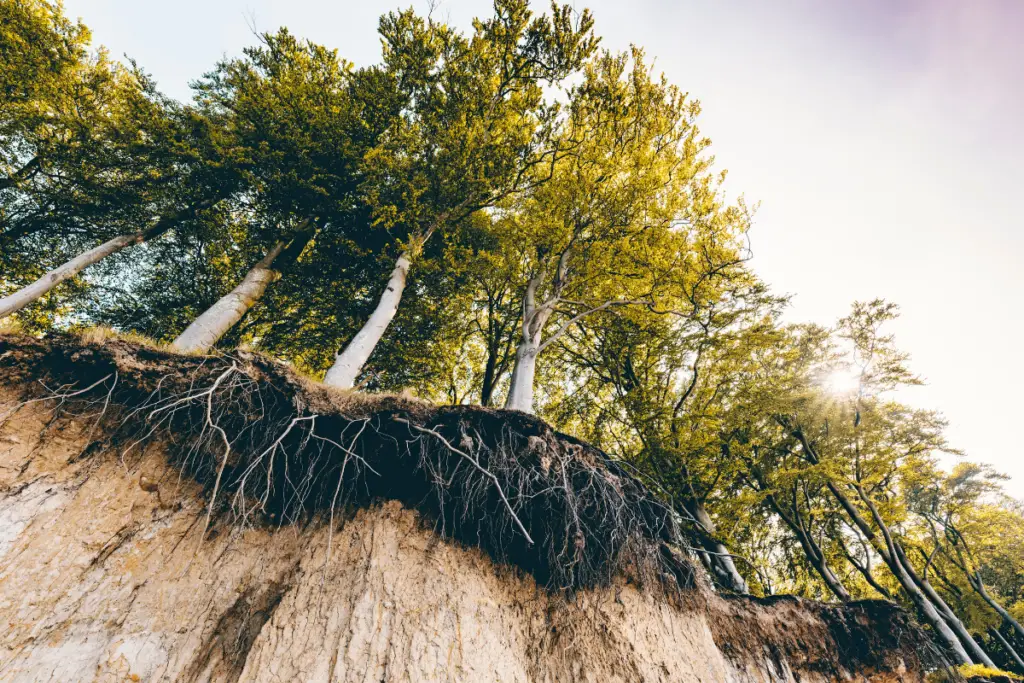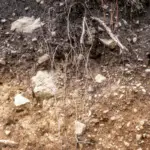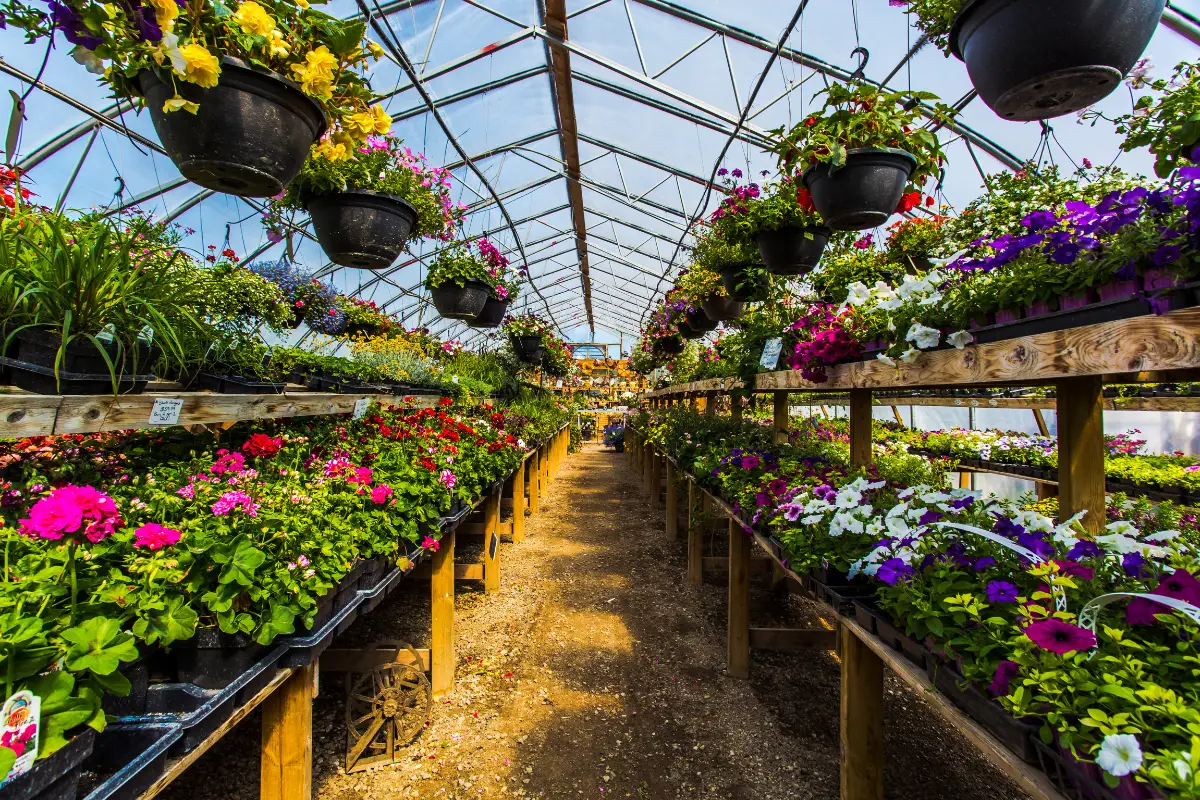Erosion is a natural process that occurs when surface materials like soil, rock, and sediment are worn away by physical and chemical forces such as wind, water, and ice.
This process can be both constructive and destructive, as it can create new landforms like valleys, beaches, and deltas, while also causing damage to infrastructure, habitats, and agricultural land.
Understanding the causes, types, and effects of erosion is essential for managing and mitigating its impacts on the environment and human society.
Water erosion is one of the most common types of erosion, and it occurs when flowing water carries away soil and sediment from riverbanks, coastlines, and other areas.
Wind erosion is another type of erosion that can cause significant damage to arid and semi-arid regions, as it can transport large amounts of soil and sand over long distances.
In addition to natural erosion processes, human activities like deforestation, urbanization, and agriculture can also accelerate erosion rates by removing vegetation cover and altering the landscape.
Preventing erosion and minimizing its impacts requires a combination of strategies, including planting vegetation to stabilize soil, implementing erosion control measures like terracing and contouring, and reducing human activities that contribute to erosion.
By understanding the causes and effects of erosion, individuals and communities can take steps to protect their land and resources for generations to come.

Table of Contents
Understanding Erosion
Erosion is a natural process that occurs when soil, rock, and other materials are worn away and transported by natural forces such as wind, water, or ice.
This process can take place over a long period of time, or it can happen quickly due to natural disasters like floods or landslides.
There are several factors that can contribute to erosion, including the type of soil, the slope of the land, the amount and intensity of rainfall, and the presence of vegetation.
In general, areas with steep slopes and little vegetation are more susceptible to erosion than those with gentle slopes and abundant plant cover.
One of the most common types of erosion is water erosion, which occurs when rainwater or runoff carries soil and other materials away from the land.
This can result in the formation of gullies, rills, and other landforms that can have a significant impact on the environment and the surrounding ecosystem.
Another type of erosion is wind erosion, which occurs when strong winds pick up soil particles and transport them to other areas.
This can result in the formation of sand dunes, as well as the loss of topsoil and other valuable resources.
Types of Erosion
Erosion is the process of wearing away the surface of the earth by natural forces such as wind, water, and ice.
There are four main types of erosion: water, wind, glacial, and gravitational erosion. Each type of erosion is unique and has different effects on the environment.
Water Erosion
Water erosion is the most common type of erosion. It occurs when water moves over the surface of the earth, carrying away soil and other materials.
The force of the water can cause small channels to form, which can grow larger over time.
Water erosion can be caused by both natural and human factors, such as heavy rainfall, floods, and deforestation.
Wind Erosion
Wind erosion occurs when wind moves over the surface of the earth, carrying away soil and other materials.
This type of erosion is most common in arid and semi-arid regions where there is little vegetation to hold the soil in place.
Wind erosion can cause sand dunes to form and can also create unique rock formations.
Glacial Erosion
Glacial erosion occurs when glaciers move over the surface of the earth, carrying away soil and other materials.
This type of erosion is common in areas with high altitudes and cold temperatures.
Glaciers can carve out valleys and create unique landforms such as fjords and cirques.
Gravitational Erosion
Gravitational erosion occurs when gravity causes rocks and other materials to move downhill. This type of erosion is most common in mountainous regions where there are steep slopes.
Gravitational erosion can cause landslides and rockfalls, which can be dangerous to people and property.
Causes of Erosion
Erosion is a natural process that occurs due to various factors.
In this section, we will discuss the two main causes of erosion: natural causes and human activities.
Natural Causes
Natural causes of erosion include wind, water, and ice. Wind erosion occurs when wind moves soil particles from one place to another.
Water erosion occurs when water flows over soil and carries away particles. Ice erosion occurs when glaciers and ice sheets move and grind against the earth’s surface.
Another natural cause of erosion is the slope of the land. Soil on steep slopes is more prone to erosion than soil on flat land.
This is because water moves faster on steep slopes, which increases the likelihood of soil particles being carried away.
Human Activities
Human activities are also a major cause of erosion. Deforestation, overgrazing, and construction activities are some of the human activities that contribute to erosion.
Deforestation removes trees and vegetation, which increases the amount of soil exposed to wind and water erosion.
Overgrazing occurs when too many animals graze on a piece of land, which can lead to the removal of vegetation and soil erosion.
Construction activities such as road building, mining, and building construction can also lead to erosion by removing vegetation and altering the natural landscape.
In addition, farming practices such as monoculture and tillage can also contribute to erosion.
Monoculture is the practice of growing only one crop on a piece of land, which can deplete the soil of nutrients and make it more prone to erosion.
Tillage is the practice of plowing the soil, which can loosen soil particles and make them more susceptible to erosion.
Effects of Erosion
Erosion is a natural process that can have significant effects on the environment and human societies.
In this section, we will explore the environmental and socio-economic impacts of erosion.
Environmental Impact
Erosion can have a range of negative environmental impacts. One of the most significant impacts is the loss of topsoil, which can reduce soil fertility and decrease agricultural productivity.
In addition, erosion can lead to increased sedimentation in rivers and streams, which can harm aquatic ecosystems by reducing water quality and clogging fish habitats.
Erosion can also lead to the loss of vegetation, which can have a range of negative effects on the environment.
For example, vegetation loss can reduce biodiversity, increase the risk of wildfires, and lead to soil erosion.
In addition, erosion can cause changes in the landscape, such as the formation of gullies and the loss of hillsides, which can have negative impacts on natural habitats.
Socio-Economic Impact
Erosion can also have significant socio-economic impacts. One of the most significant impacts is the loss of agricultural productivity, which can reduce food security and increase the cost of food.
In addition, erosion can lead to increased flooding, which can damage infrastructure and property and increase the risk of waterborne diseases.
Erosion can also have negative impacts on human health. For example, erosion can lead to increased air pollution and the spread of dust and other particulate matter, which can harm respiratory health.
In addition, erosion can lead to the loss of natural habitats, which can reduce opportunities for recreation and tourism.
Prevention and Control of Erosion
Erosion is the process of soil and rock being worn away by natural elements such as wind and water.
This can lead to soil degradation, loss of nutrients, and even flooding.
To prevent and control erosion, several methods can be employed, including soil management, vegetation cover, and engineering structures.
Soil Management
Soil management is an essential aspect of erosion control. Proper soil management practices can help to reduce soil erosion and promote soil health.
Some soil management practices that can be employed include:
- Contour farming: This involves planting crops along the contour lines of a slope, which helps to slow down water runoff and reduce soil erosion.
- Conservation tillage: This involves leaving crop residue on the soil surface to protect the soil from erosion.
- Cover cropping: This involves planting crops that can help to protect the soil from erosion by covering the soil surface and holding it in place.
Vegetation Cover
Vegetation cover is another effective way of preventing and controlling erosion.
Vegetation cover helps to hold the soil in place by creating a physical barrier between the soil and the elements that cause erosion.
Some vegetation cover methods that can be employed include:
- Planting grass and shrubs: Grass and shrubs have deep roots that can hold the soil in place and prevent erosion.
- Mulching: Mulching involves covering the soil with organic material such as leaves or straw to protect it from erosion.
- Terracing: Terracing involves creating flat areas on a slope and planting vegetation on these areas to prevent erosion.
Engineering Structures
Engineering structures can also be used to prevent and control erosion. These structures are designed to slow down water runoff and prevent soil erosion.
Some engineering structures that can be employed include:
- Retaining walls: Retaining walls are walls that are built to hold back soil and prevent erosion.
- Gabions: Gabions are wire baskets filled with stones that are used to stabilize slopes and prevent erosion.
- Riprap: Riprap involves placing large rocks or boulders along a slope to prevent erosion.
Future of Erosion
Erosion is an ongoing natural process that has been happening for millions of years.
However, human activities such as deforestation, mining, and construction have accelerated the process of erosion in many parts of the world.
The future of erosion is a topic of concern for scientists and policymakers because of its potential to cause significant environmental and economic damage.
Soil Erosion
Soil erosion is a major problem that affects agricultural productivity, water quality, and biodiversity.
According to a report by the World Resources Institute, soil erosion is expected to increase in the future due to climate change and land use changes.
The report predicts that by 2050, erosion rates will increase by 30% in some parts of the world, leading to a decline in agricultural productivity and increased water pollution.
To prevent soil erosion, policymakers and farmers must adopt sustainable land management practices such as conservation tillage, cover cropping, and agroforestry.
These practices help to reduce soil disturbance, increase soil organic matter, and improve soil structure, which in turn reduces erosion rates.
Coastal Erosion
Coastal erosion is another major problem that affects millions of people living in coastal areas around the world.
Rising sea levels, storm surges, and increased wave energy due to climate change are expected to accelerate coastal erosion in the future.
According to a report by Stanford University, some coastal areas could experience erosion rates of up to 10 meters per year by 2100.
To address coastal erosion, policymakers and coastal managers must adopt a range of strategies such as beach nourishment, dune restoration, and the construction of sea walls and breakwaters.
These strategies help to reduce the impact of waves and storm surges on coastal areas and protect infrastructure and property from damage.
Conclusion
In conclusion, the future of erosion is a complex and multifaceted issue that requires a range of solutions and strategies to address.
Sustainable land management practices, coastal protection measures, and climate change mitigation efforts are all essential to reduce the impact of erosion on our environment and economy.













